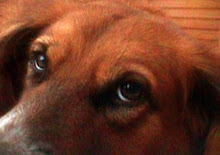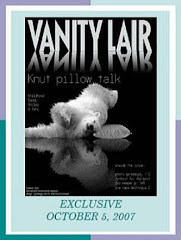"Polar Bear Infanticide & Cannibalism on the Arctic Ice - Global Warming
I've just returned from a few weeks in the Arctic observing polar bears (Ursus martimus).
As many as 12 bears were observed at any one time which included large males, females, and females with cubs (1st and 2nd year). I also sighted Arctic Fox, Arctic Hare, Silver and Cross Fox, and Rock Ptarmigans.
Photographs were taken in an assortment of conditions ranging from almost balmy conditions in full sun to downright frigid temperatures with 50 knot blizzard winds and falling snow.
Bear Congregation Waits for Ice to Form
From October to November there are many bears that have migrated from the more southerly regions to the shores of Hudson Bay; they are very hungry and have not fed for most of the summer. The congregation is waiting for the sea ice to form to allow them to roam widely to feed upon their favourite prey - the ringed seal.
One of the most striking observations I made was the lack of solid sea ice. Although the ice was slowly forming, it was still what they call grease ice, which is ice that is not suitable for the bears to traverse safely any great distance from the shoreline. The sea ice is paramount to the bear's survival as without the ice formation the bears cannot move onto the bay to track and feed on seals.
Cannibalism
On one day we observed a male polar bear feeding upon what appeared to be some type of carrion - perhaps a seal or a other small animal. However, upon closer inspection it was revealed that the small carcass was not a seal but rather a baby first year polar bear. The location of the feeding male was given away by two ravens which could be seen from some distance jumping and flying about.
Circling the male was a female bear which appeared to be in obvious distress. The female was not walking as polar bears usually do - steadily and surely, but instead had a stiff gait and was walking erratically. Further, the bear's head was swaying from side to side and the mother was making low vocalisations.Although cannibalism is not unheard of in the animal world, it isn't commonly observed amongst polar bears. There are several hypothesis for cannibalism, however, all are unfounded. Perhaps the male bear is removing future competition by killing the cub, or is killing the cub to cause the female mother to become 'available" again for mating. Although these are plausible reasons, it's more likely that the male bear was exceptionally hungry and seized the opportunity for nutritional gain by feeding upon the cub. As mentioned earlier the bears are congregating to feed on ringed seals on the ice. If the ice is not forming earlier enough, then the hungry bears become starved and after reaching such a poor condition may seek alternate prey such as young bear cubs or other animals.
Of interest is that the male bear did not consume the liver of the cub. This is because the liver of a polar bear is toxic. How did the male know the liver was toxic?
Major Concern
What's a major concern is that this cannibalistic behaviour may become more prevalent if conditions favourable for ice formation are delayed, leading to fewer recruitment of a species that is already in decline.
Scientists have documented the gradual reduction and delay in sea ice formation for several years and although some proponents believe this to be a normal event, others believe the cause maybe global warming. Whatever the cause, the results speak for themselves - sea ice is not forming as rapidly or as extensively as it did.
Please note that this image is being posted NOT to discriminate or advance the perception that polar bears are fearless and uncaring predators, but to highlight a concern that global warming is altering the behaviour of specific species.As I get time I will post a series of images I have photographed of the event.
For more information on the plight of the polar bear, please visit Polar Bears International"
Source & photo credits:- Again: This article has been published by Ian Williams in his photo blog Anaspides, where you will find more photos.
As long as there is the Copenhagen Conference I will post more often articles concerning the effects of global warming, I did it in the past, I will do it in the future but now I just do it more frequently...
















































2 Kommentare:
Thanks for adding my images to your post. To me wildlife photography is about making a difference and promoting conservation. I hope these images make a difference in some small way.....Iain
As you suggest, I wonder too if the fact that the cubs are small, furry prey doesn't simply trigger predation from the males. Polar bears are highly evolved mammals, but that doesn't mean that they necessarily make rational or moral decisions. I think they were simply hungry, and the cubs looked like easy prey. The result of wrenching.
Kommentar veröffentlichen